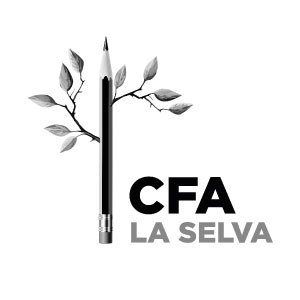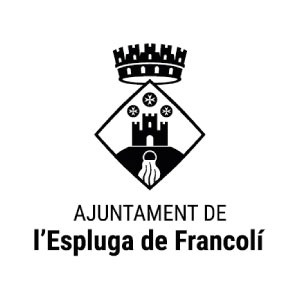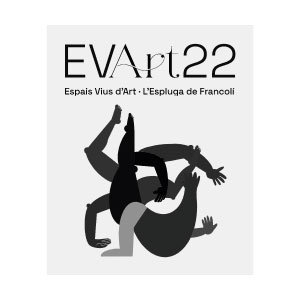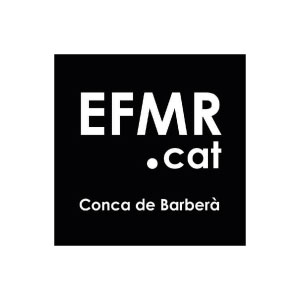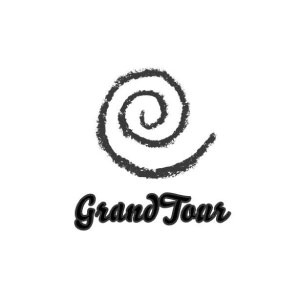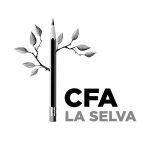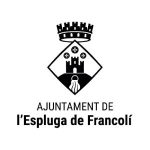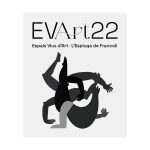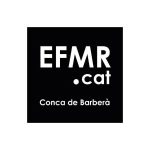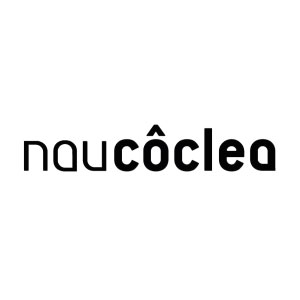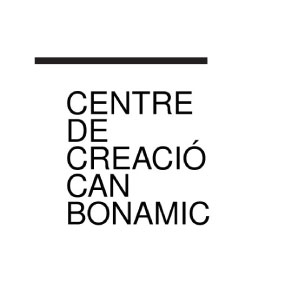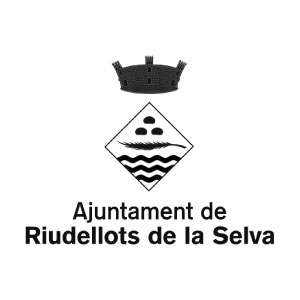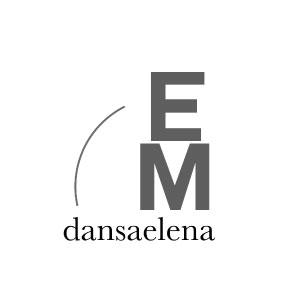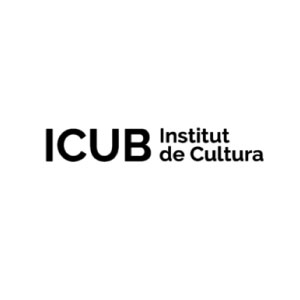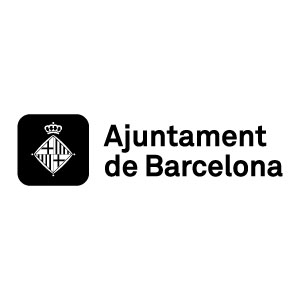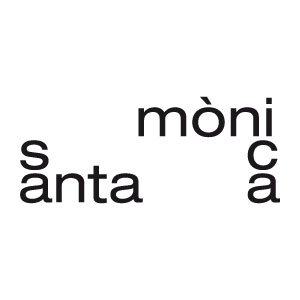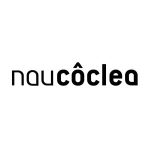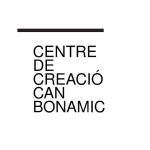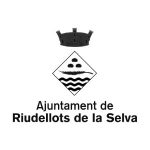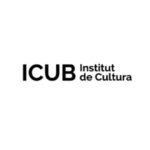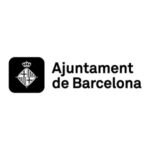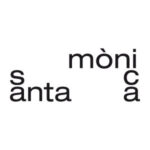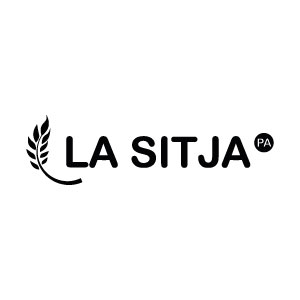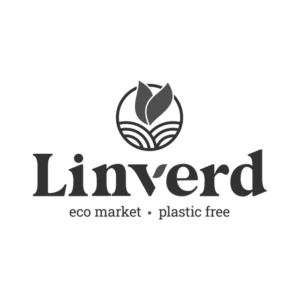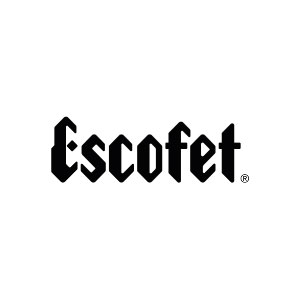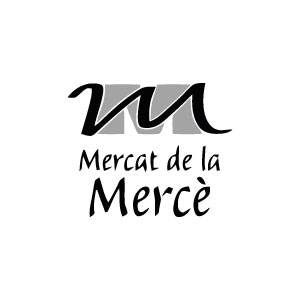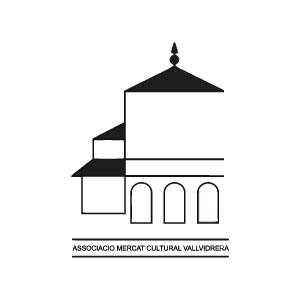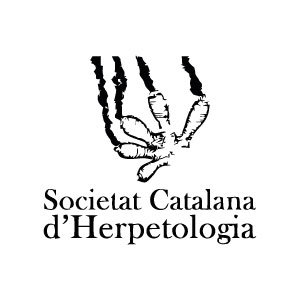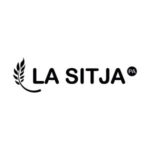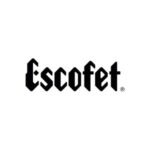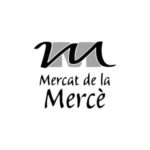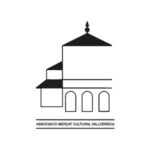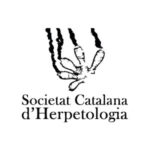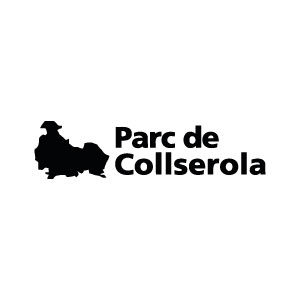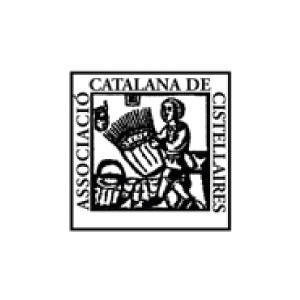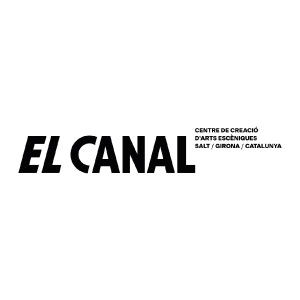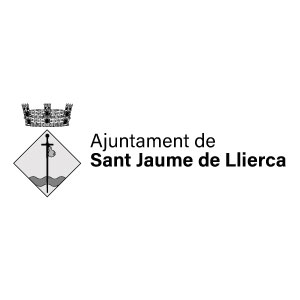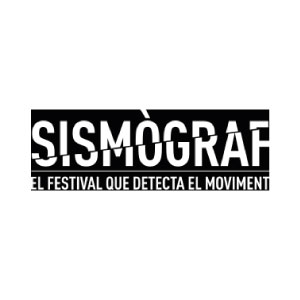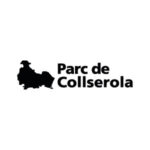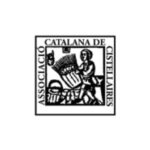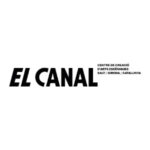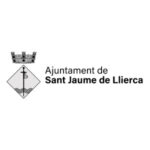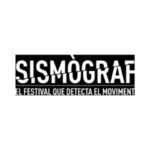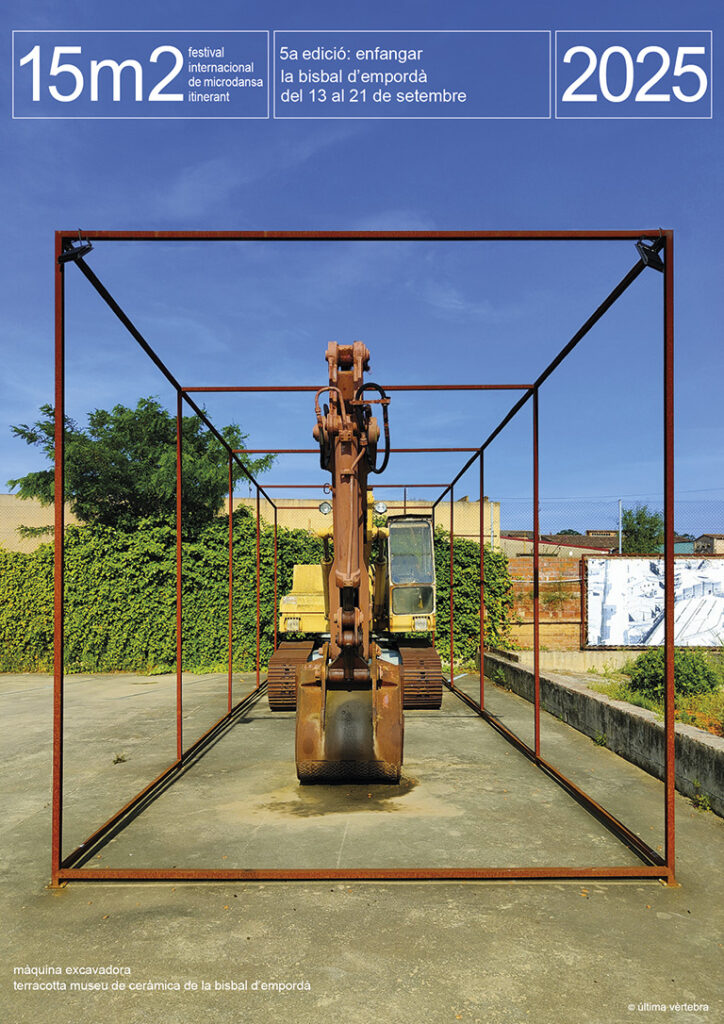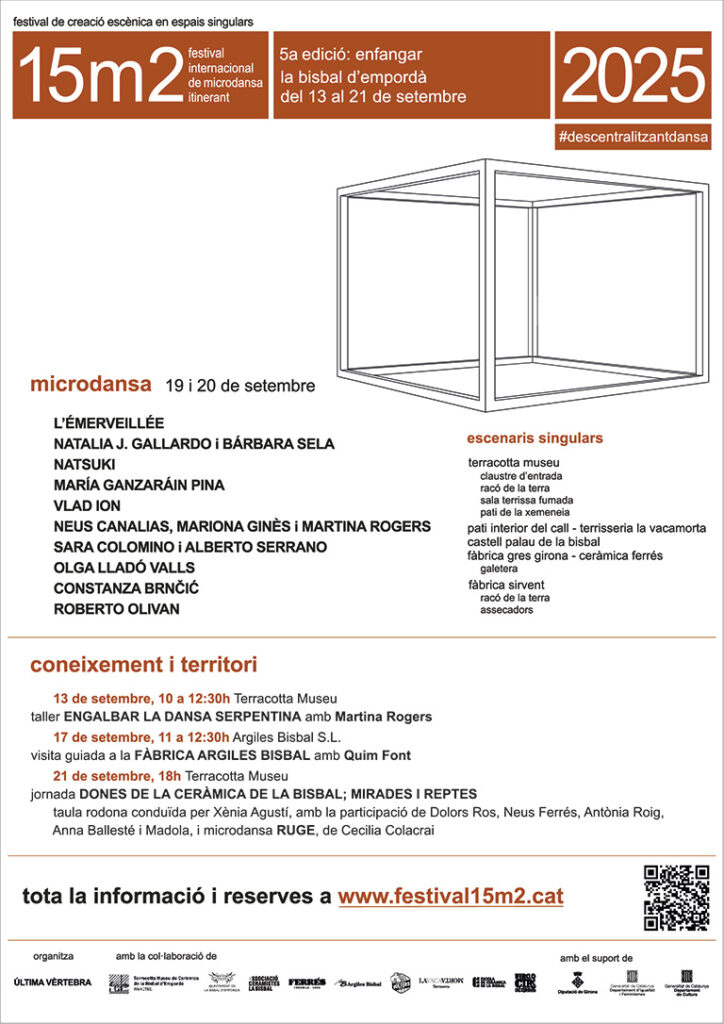edition 2025: to muddy
la bisbal d’empordà (girona, catalonia)
from 13 to 21 September
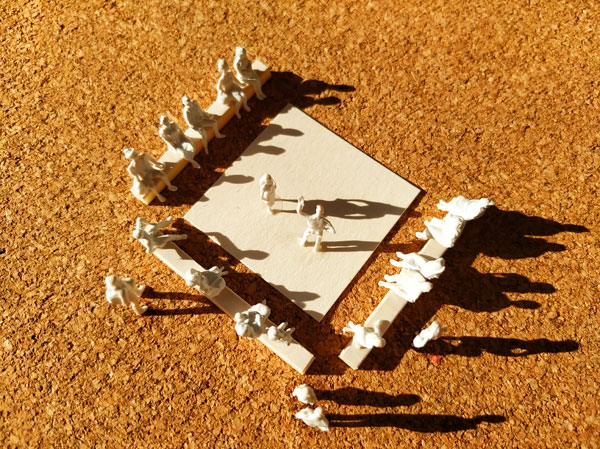
15m2 international festival of itinerant microdance
15m2 is a microdance festival that takes place in singular and unconventional spaces around a thematic axis and a specific locality. It is a way of linking stage creation with the fields of knowledge and the cultural fabric of the territory.
An itinerant and emerging cultural project, where each edition is a construction in itself, an exploration of a theme in a different locality each time. The festival has a programme of professional microdance exhibitions and complementary activities of Knowledge and territory. On the other hand, it also has various activities and actions that, outside the dates of the festival, give continuity to the objectives of the project, under the name of 15m2 en xarxa.
programme
microdance
19 and 20 september
10 microdance projects
21 september, 20:30h
award recognitions
grill
friday 19
| Artist | Stage | Time |
| NEUS CANALIAS, PEPI IZQUIERDO and MARTINA ROGERS | Inner courtyard of the Call – Terrisseria La Vacamorta | 17h |
| MARÍA GANZARÁIN PINA | Inner courtyard of the Call – Terrisseria La Vacamorta | 17:30h |
| SARA COLOMINO and ALBERTO SERRANO | La Bisbal Palace Castle | 18h |
| NATSUKI | The land room Terracotta Museum | 19h |
| NATALIA J. GALLARDO and BÁRBARA SELA | Chimney courtyard Terracotta Museum | 19:30h |
saturday 20
| Artist | Stage | Time |
| MARÍA GANZARÁIN PINA | Entrance cloister Terracotta Museum | 17h |
| NATSUKI | The land room Terracotta Museum | 17h |
| L’ÉMERVEILLÉE | Chimney courtyard Terracotta Museum | 17:30h |
| OLGA LLADÓ VALLS | The land room Sirvent Factory | 17:30h |
| VLAD ION | The tile machine Gres Girona Factory – Ceràmica Ferrés | 18h |
| NEUS CANALIAS, IZQUIERDO and MARTINA ROGERS | Dryers Sirvent Factory | 18h |
| CONSTANZA BRNČIĆ | Smoked ceramics room Terracotta Museum | 18h |
| L’ÉMERVEILLÉE | Chimney courtyard Terracotta Museum | 18:30h |
| OLGA LLADÓ VALLS | The land room Sirvent Factory | 18:30h |
| ROBERTO OLIVAN and MARTA TORELLÓ | Dryers Sirvent Factory | 18:30h |
| VLAD ION | The tile machine Gres Girona Factory – Ceràmica Ferrés | 19h |
| SARA COLOMINO and ALBERTO SERRANO | Dryers Sirvent Factory | 19h |
| CONSTANZA BRNČIĆ | Smoked ceramics room Terracotta Museum | 19h |
| NATALIA J. GALLARDO and BÁRBARA SELA | Chimney courtyard Terracotta Museum | 19:30h |
| ROBERTO OLIVAN and MARTA TORELLÓ | Dryers Sirvent Factory | 19:30h |
unconventional spaces
Terracotta Museum
| Entrance cloister |
| The land room |
| Smoked ceramics room |
| Chimney courtyard |
Gres Girona Factory – Ceràmiques Ferrés
| The tile machine |
Sirvent Factory
| The land room |
| Dryers |

Inner courtyard of the Call – Terrisseria La Vacamorta
La Bisbal Palace Castle

13 september, 10am to 12.30pm Terracotta Ceramics Museum
workshop ENGALBAR LA DANSA SERPENTINA with Martina Rogers
17 september, 11am to 12.30pm Argiles Bisbal S.L. (Corça)
guided tour of the ARGILES BISBAL FACTORY with Quim Font, with cheese tasting from Baix Empordà.
21 september, 6pm to 8.30pm Terracotta Ceramics Museum
session WOMEN IN CERAMICS IN LA BISBAL; PERSPECTIVES AND CHALLENGES
6 p.m. Round table discussion led by Xènia Agustí with the participation of Dolors Ros, Antònia Roig, Neus Ferrés, Anna Ballesté and Madola
7.30 p.m. Microdance RUGE, by Cecília Colacrai
8 p.m. Glass of DO Empordà wine
edition 2025
to muddy, la bisbal d'empordà (girona, catalonia)
from 13 to 21 September
To muddy: to cover with mud.
To get your hands dirty, to use them, to let them do it. Preparar la terra; estendre-la, picar-la petita, amarar-la, remoure-la, colar-la, assolar-la, ratllar-la, girar-la, entrar i apilar els pans de terra. Pastar-la amb la mà o també trepitjar-la; estirar-la, tallar-la a trossos, agermanar-la i apastonar-la*. Let the skin wake up to feel the tightness of the clay drying. To feel the fissures. To cover the body with clay as the engobe bathes the piece. A way to mold and build objects that explain who we are.
Working with clay is one of the oldest activities of humanity. From various vessels to objects with spiritual meaning, ceramics have been deeply linked to cultural identity and daily life. It appears in the Neolithic and in all civilizations throughout history to the present day, responding to the most basic needs: eating, drinking, cooking and storing food, where the typology of pieces is very rich with all kinds of plates, pots, pitchers, jugs, bottles, basins, bowls, jars, stoves, etc. The need for shelter, with elements such as bricks, tiles or tubes used in construction. And also, the magical, aesthetic and artistic need for expression with an infinity of objects and actions where working with clay is the protagonist
This year’s edition of 15m2 proposes the verb in the infinitive To muddy as a starting point for artistic and conceptual creation. A declaration to action using the work developed by the artist Pere Noguera and also by all the artists, craftsmen and workers in the sector. Its epicenter is the Terracotta Museu de Ceràmica de la Bisbal d’Empordà, a very unique cultural space that is located in an old ceramics factory while integrating the elements of its production. The Terracotta Museu hosts and safeguards the cultural heritage of the Ceramic Industry of la Bisbal d’Empordà in its traditional, industrial, artistic and contemporary aspects and 15m2 wants to contribute to the dissemination and promotion of this emblematic and ancestral heritage that is part of the character of its people.
An edition to explore, perhaps, the possibilities of clay on stage, of the artisan craft and the ceramic industry as dramaturgical inspiration, or of a muddy body that moves. An edition to approach and get to know a sector, a municipality and a community that has been built around ceramics that, over generations, has shaped a substantial part of the local identity. A particular way of being and doing that has strengthened among the people of La Bisbal de l’Empordà a deep sense of belonging to a land and a country.
* Words that are part of the process of preparing the soil and the beginning of the elaboration of the pieces, Noguera (1978).
Noguera, P. 1978. Terrissa de la Bisbal. L’argila com a matèria. El procés d’elaboració
com a pràctica. Edició facsímil per Terracotta Museu, 2025.
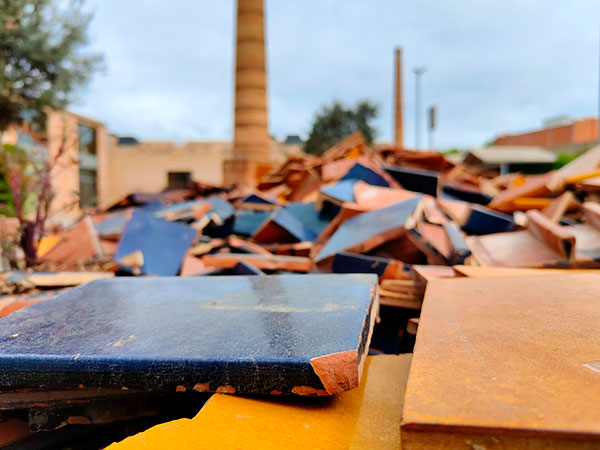
Information of interest:
how to get there
by car
From Barcelona
Take the AP7 motorway towards Girona/France – Exit 9 (Vidreres/Lloret) towards Sant Feliu de Guíxols/Platja d’Aro on the C-35. Follow the signs for Palamós (C-31).
From Lleida
Eix Transversal de Cervera to Riudellots de la Selva, towards Cassà de la Selva, Llagostera, Sant Feliu de Guixols and continue towards Palamós (C-31).
From France
AP7 motorway towards Barcelona – Exit 6 (Girona Nord) towards La Bisbal/Palamós (C-66).
by trasnport public
By bus
Sarfa Company (Sarbus Group)
From Barcelona to Estació del Nord (Arc de Triomf).
From Girona to the bus terminal.
From Flaçà bus stop in front of the train station to Palafrugell, a town located 13 km from La Bisbal d’Empordà.
By train – AVE
Girona Station
The bus station is located in the same train station, with frequent services to La Bisbal d’Empordà with the Sarfa company.
Flaça Station
In front of the station, you can take a bus to La Bisbal d’Empordà.
Figueres – Vilafant Station
Next to the station, you will find the Teisa shuttle buses, which take passengers to the Figueres bus station, where they can take Sarfa buses to La Bisbal d’Empordà.
edition 2025
to muddy, la bisbal d'empordà (girona, catalonia)
from 13 to 21 September
To muddy: to cover with mud.
To get your hands dirty, to use them, to let them do it. Preparar la terra; estendre-la, picar-la petita, amarar-la, remoure-la, colar-la, assolar-la, ratllar-la, girar-la, entrar i apilar els pans de terra. Pastar-la amb la mà o també trepitjar-la; estirar-la, tallar-la a trossos, agermanar-la i apastonar-la*. Let the skin wake up to feel the tightness of the clay drying. To feel the fissures. To cover the body with clay as the engobe bathes the piece. A way to mold and build objects that explain who we are.
Working with clay is one of the oldest activities of humanity. From various vessels to objects with spiritual meaning, ceramics have been deeply linked to cultural identity and daily life. It appears in the Neolithic and in all civilizations throughout history to the present day, responding to the most basic needs: eating, drinking, cooking and storing food, where the typology of pieces is very rich with all kinds of plates, pots, pitchers, jugs, bottles, basins, bowls, jars, stoves, etc. The need for shelter, with elements such as bricks, tiles or tubes used in construction. And also, the magical, aesthetic and artistic need for expression with an infinity of objects and actions where working with clay is the protagonist
This year’s edition of 15m2 proposes the verb in the infinitive To muddy as a starting point for artistic and conceptual creation. A declaration to action using the work developed by the artist Pere Noguera and also by all the artists, craftsmen and workers in the sector. Its epicenter is the Terracotta Museu de Ceràmica de la Bisbal d’Empordà, a very unique cultural space that is located in an old ceramics factory while integrating the elements of its production. The Terracotta Museu hosts and safeguards the cultural heritage of the Ceramic Industry of la Bisbal d’Empordà in its traditional, industrial, artistic and contemporary aspects and 15m2 wants to contribute to the dissemination and promotion of this emblematic and ancestral heritage that is part of the character of its people.
An edition to explore, perhaps, the possibilities of clay on stage, of the artisan craft and the ceramic industry as dramaturgical inspiration, or of a muddy body that moves. An edition to approach and get to know a sector, a municipality and a community that has been built around ceramics that, over generations, has shaped a substantial part of the local identity. A particular way of being and doing that has strengthened among the people of La Bisbal de l’Empordà a deep sense of belonging to a land and a country.
* Words that are part of the process of preparing the soil and the beginning of the elaboration of the pieces, Noguera (1978).
Noguera, P. 1978. Terrissa de la Bisbal. L’argila com a matèria. El procés d’elaboració
com a pràctica. Edició facsímil per Terracotta Museu, 2025.

Information of interest:
how to get there
by car
From Barcelona
Take the AP7 motorway towards Girona/France – Exit 9 (Vidreres/Lloret) towards Sant Feliu de Guíxols/Platja d’Aro on the C-35. Follow the signs for Palamós (C-31).
From Lleida
Eix Transversal de Cervera to Riudellots de la Selva, towards Cassà de la Selva, Llagostera, Sant Feliu de Guixols and continue towards Palamós (C-31).
From France
AP7 motorway towards Barcelona – Exit 6 (Girona Nord) towards La Bisbal/Palamós (C-66).
by trasnport public
By bus
Sarfa Company (Sarbus Group)
From Barcelona to Estació del Nord (Arc de Triomf).
From Girona to the bus terminal.
From Flaçà bus stop in front of the train station to Palafrugell, a town located 13 km from La Bisbal d’Empordà.
By train – AVE
Girona Station
The bus station is located in the same train station, with frequent services to La Bisbal d’Empordà with the Sarfa company.
Flaça Station
In front of the station, you can take a bus to La Bisbal d’Empordà.
Figueres – Vilafant Station
Next to the station, you will find the Teisa shuttle buses, which take passengers to the Figueres bus station, where they can take Sarfa buses to La Bisbal d’Empordà.
the festival
thematic and itinerant character
The festival is structured around a thematic axis, with a theme and a specific locality to highlight the value of the territory and the fields of knowledge.
The thematic axis is related to current affairs and to artistic, cultural, traditional, historical, scientific or natural knowledge, in order to highlight the uniqueness of the territory. Thus, for example, the themes of future editions will be of a very diverse nature, both themes related to the plastic arts, such as the literary work of a poet, the plastic work of a sculptor or that of a photographer, and those linked to cultural, historical, archaeological or natural heritage, or related to knowledge of customs and beliefs, crafts, rural art or Romanesque art.
And also current issues and social criticism such as the problem of plastic waste, depopulation, ageing and dependence of the elderly or liquid modernity.
unconventional spaces
The microdance creations will be performed on 15m2 stages, referring to the name of the festival, located in unique or unconventional spaces, both indoors and outdoors, of interest for the theme and location where it takes place. The stage will be square with sides of 3.90 m in length. Depending on the spaces, and on some stages, a rectangular steel structure with the same dimensions will be set up for the exhibitions.
The 15m2 festival aims to vindicate small-format culture and highlight the value of microdance: short pieces in small, singular and unconventional spaces, designed for small, intimate audiences. Close creations, worked from the detail, where the audience almost shares the space with the performer. And the dimensions and singularity of the stages build a space of involvement and proximity with the spectator.
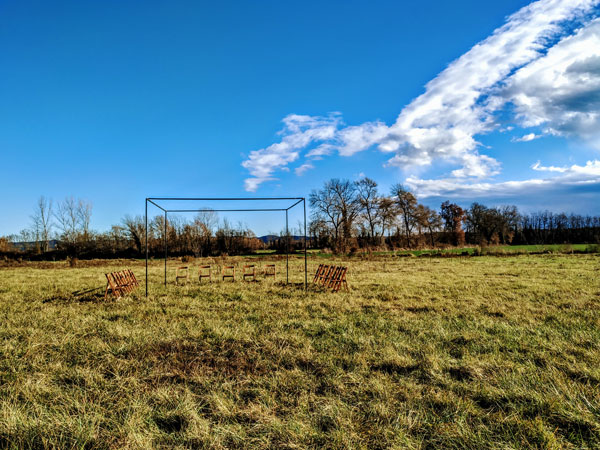
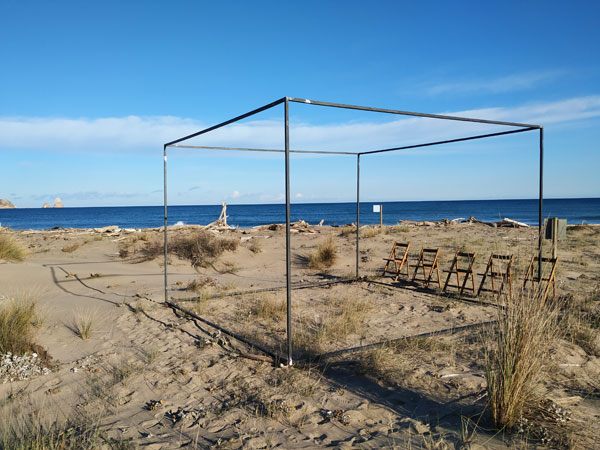
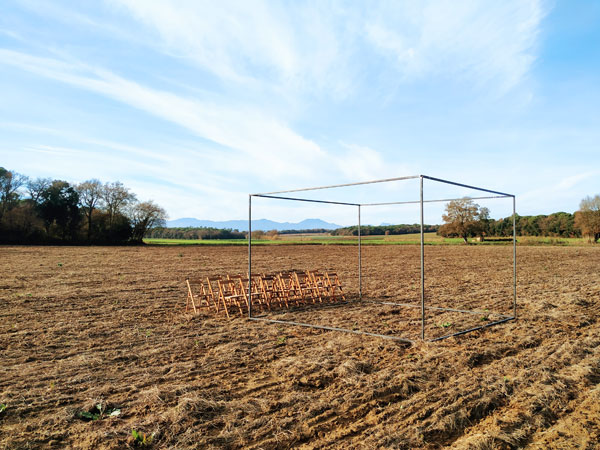
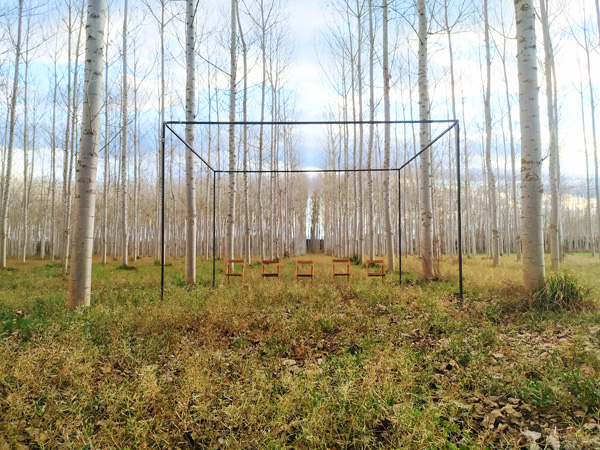

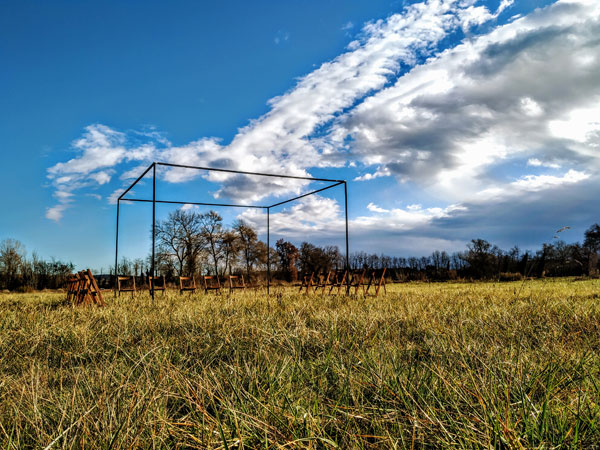
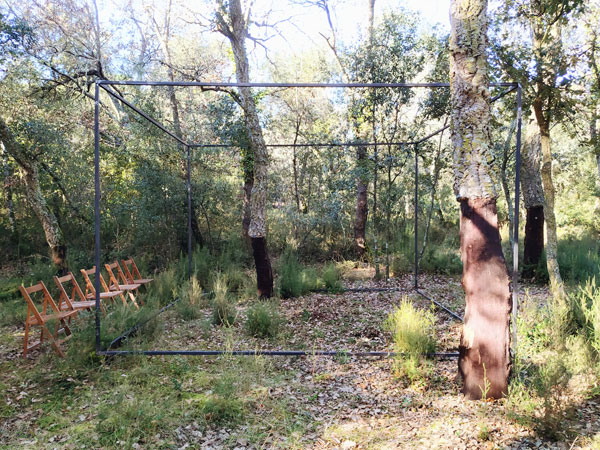
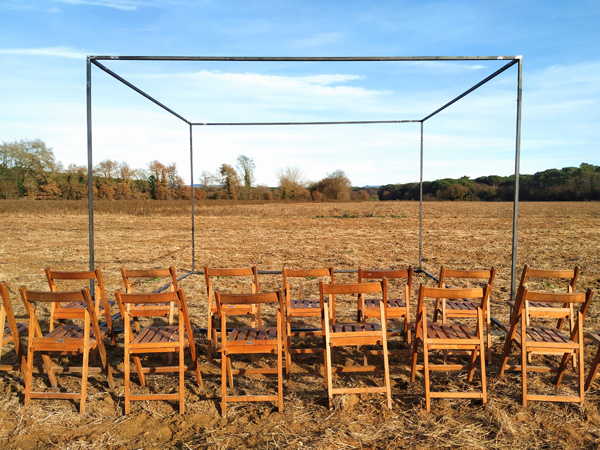
microdance

The microdance creations will be short pieces, between 15 and 20 minutes, which will be inspired by the theme of the festival. Movement and the body will be the main focus of the proposals, although other artistic disciplines will be welcome. With the aim of encouraging scenographic creation in movement works, the festival will value the creation of scenographic proposals with elements and materials related to the thematic axis in the public call for entries.
The creations will have to be adapted to the festival’s exhibition spaces, with few technical requirements, without special lighting needs and with a set-up and dismantling time of no more than 10 minutes respectively.
The festival will host 12 microdance creations. There will be a public call for proposals and the festival will propose one or two guest creations. The proposals will be chosen according to the artistic criteria of the festival and the criteria of territorial scope. On the one hand, the aim is to promote local creations that are close to the festival’s locality, and on the other hand, to welcome creations from outside Spain in order to internationalise the festival.
The festival wants to generate a microdance circuit in the Catalan territory to decentralize and expand the scenic creation and cultural programs outside the big cities..
10 microdance projects
L’émerveillée
V
| Saturday 20th | Chimney courtyard Terracotta Museum | 17:30h |
| Saturday 20th | Chimney courtyard Terracotta Museum | 18:30h |
V is a body with its size, its articulations, its bones and fluids; a body with its irrevocable mortality, its impotence before the weight of gravity and the passing of time, but a body that moves.
A solitary body that plays with the imagination and changes the point of view to find answers. What are we doing here? Through absurdity and humor, the character searches for a belief that gives meaning to his own existence.
Patricia Hastewell Puig
Born in Barcelona, she graduated in Dance at Àrea Espai de Dansa i Creació 2013 and at the Salzburg Experimental Academy of Dance 2017, and in Law at the University of Barcelona 2013. As a dancer she has been part of renowned companies such as Jasmin Vardimon, Guy Nader/Maria Campos, Michael Keegan-Dolan, and Ravid Abarbanel. Currently, she is part of the new project Cèl-lula del Mercat de les Flors of the choreographer Roser López Espinosa. As a creator, she has developed the works “All These Places Have Their Moments”, “Bardo Vals”, “Les Passants”, ‘V’, and “Quiets”, which have been awarded with prizes and have toured internationally.
artistic file
| Direction, creation and interpretation: Patricia Hastewell Puig |
| Musical interpretación: Jordi Claret |
| Text: Eduard Paredes |
| Set design: Anna Vidal Campanyà |
| External view: Giulia Tornarolli, Eduard Paredes |
| Support and residences: SAT! teatre, Fabra i Coats, L’animal a l’esquena, Teatre Nu and Ajuntament de Masnou |
| Duration: 20 min. |


Photographs: Luis San Andrés
Natalia Jiménez Gallardo and Bárbara Sela
Será paisaje/oler el camino
| Friday 19th | Chimney courtyard Terracotta Museum | 19:30h |
| Saturday 20th | Chimney courtyard Terracotta Museum | 19:30h |
“Será paisaje/oler el camino” is a dance piece that explores the flow of life, embodying the transition from one generation to the next through the artisanal element of the botijo (earthenware jug). All the elements of the piece appear in the space as part of the same landscape. The botijo swings in the air as a choreographic principle and awakens shared stories. Sound and movement are treated as two fluids that relate to each other and raise the question: What density does the flow of our attention take on when we listen with our eyes and look with our ears?
Natalia Jiménez Gallardo
Jaén, 1980. She is a dancer, choreographer, improviser, teacher and Shiatsu therapist. Over the years she has explored very different approaches to think through the body. Since 2020 she has directed and managed the SEMANA SANA movement arts and body workshops. She is co-founder of Group La Bolsa, where she dialogues and researches on performative practices of live creation. She is currently expanding her research for choreographic creation with the support of the SGAE Foundation in Deeplistening and with the Physical Inquieres&Somatics Practices program of Movement Research in New York (USA). As a choreographer, Natalia has premiered a total of 14 choreographic works and accompanies numerous stage projects of the contemporary creation scene. She establishes interdisciplinary collaborations that offer her a more versatile, widened and willing attitude towards the stage. Natalia defines herself in her artistic practice as an improviser interested in translation and memory methodologies. Natalia defines their artistic practice as that of an improviser interested in methodologies of translation and memory.
Bárbara Sela
Madrid, 1969. Early music performer. Her experience as a flautist and bassoonist in very diverse contexts awakens a special interest in the sonorous projection of her instrument with respect to space, grouping and perception. From an introspective work, far from narrative developments, she takes the sound material as the basis of her instrumental study and with it, she deepens her attentive listening; she thus unfolds a field of investigation of the micro-variations of sound as a tool in the search for the “small” and subtle. This desire to investigate the timbral possibilities of the recorder without taking it out of its natural sphere, which is the intimate, is her gateway to the field of free improvisation.
artistic file
| Direction and coreography: Natalia Jiménez Gallardo |
| Musician: Bárbara Sela |
| Costume designer: Isabel Arias de Saavedra |
| Duration: 18 min. |


Photographs: Marta Bèlev
Natsuki
| Friday 19th | The land room Terracotta Museum | 19h |
| Saturday 20th | The land room Terracotta Museum | 17h |
Specific site 粘土 Nendo celebrates the trace of the artisanal gesture in the clay and relates it to the cubic methodology of one of the figures of American postmodern dance and the Japanese muddy performances of the first butô dancers, to the sound of the music of Agnes Obel and the tramuntana (north wind), under the Empordà sky.
Natsuki
Choreographer, dancer and videographer from Girona, trained at the Institut del Teatre in Barcelona and at The Place Dance School in London. She founded L’Universelle Illustrée Compagnie de Danse in France in 1991, collaborates with the Centre Choreographique National de Normandie and with the Japanese choreographer Carlotta Ikeda. Recently installed in La Bisbal d’Empordà, she develops the “MIAM” project for the valorization of contemporary choreographic heritage and promotes the Lampiria Association dedicated to cultural engineering, the arts in movement, research and creation.
artistic file
| Conception, choreography, scenography and performance: Natsuki |
| Costume and accessories: Kova Loka |
| Music: Agnes Obel |
| Voiceover, conference mix: Arantxa Soller |
| Production: Lampiria |
| Duration: 20 min. |


Photographs: MorenoVentturinI/LMPR
María Ganzaráin Pina
CAMPO ABIERTO
| Friday 19th | Inner courtyard of the Call – Terrisseria La Vacamorta | 17:30h |
| Saturday 20th | Entrance cloister Terracotta Museum | 17h |
Synopsis:
A wish,
a mystery,
an incantation.
“Campo abierto”
is
a rite to celebrate and invoke
the force of the invisible
as well as to honor life.
María Ganzaráin Pina
Contemporary stage creator originally from La Rioja, graduated in Fine Arts from the Complutense University of Madrid. María researches on composition through the moving image. Her practice is motivated by the relationship of elements and bodies in the scenic space and the expressive ways in which some affect others. In 2019-20 she is part of the project Fre3 Bodies / Creation and Performance, directed by Nicolás Richinni and Nadine Gerspacher. She received a scholarship from the choreographer Jorge Crecis. She works as a performer with different dance and contemporary scene companies such as Cía Esa Gente, Jorge Albuerne or Babirusa Danza, as well as being part of audiovisual and new media projects with artists such as Kati Kallio, Álex Pachón or Kònic Thtr. María was resident artist of the Centro Coreográfico de La Rioja and its program to support creation and research 2020-21. In 2023 she founded the scenic collective Las Mañas together with Yeinner Chicas, with whom she has been working since 2018. In 2024 her work CAMPO ABIERTO is selected in the IX Reunión en Danza and the same year she is part of the Moroccan-Spanish creation and collaboration project that opens the 30th Festival d’Art Video de Casablanca.
artistic file
| Creation and interpretation: María Ganzaráin Pina |
| Production: LAS MAÑAS |
| External view: Yeinner Noies |
| Costume designer: Maije Guerrero |
| Sound space: Thomas Köner and Screamin’Jay Hawkins |
| Support and residences: Sala El Gato Negro (Murillo de Gállego, Aragó), Satisfactory Espació d’Arts (San José, Costa Rica) |
| Duration: 15 min. |
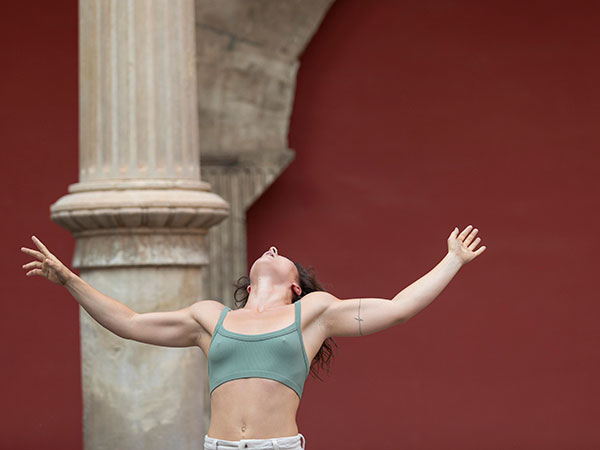

Photographs: Marta Aschenbecher
Vlad Ion
Me lo hice yo mismo
| Saturday 20th | The tile machine Gres Girona Factory – Ceràmica Ferrés | 18h |
| Saturday 20th | The tile machine Gres Girona Factory – Ceràmica Ferrés | 19h |
“Me lo hice yo mismo” is a contemporary dance solo with influences from urban dance and physical theater. The main intention of the piece is to invite to reflect on which parts of ourselves we choose to show and which we choose to hide in order to be accepted.
Vlad Ion
He started in the world of breaking as a self-taught dancer in Bilbao and trained professionally in contemporary dance in Barcelona (Varium and Free Bodies). He has worked as a performer in pieces by Clémentine Télesfort and Lisard Tranis, Nadine Gerspacher, Vero Cendoya and Toni Mira. As a creator, he has developed works such as “Shalott” with Guillem Batlle, “St. Earnest” with Nadine Gerspacher and “I HOPE” piece created for the young company Hanami.
artistic file
| Idea and choreography: Vlad Ion |
| Artistic assistance: Clémentine Télesfort |
| External view: Paola Gay |
| Photography: Clémentine Télesfort and Cristina Martín |
| Support: Free Zone i Mutis |
| Duration: 15 min. |


Photographs: Marta Cordellach
Neus Canalias, Pepi Izquierdo i Martina Rogers
De terra i silenci
| Friday 19th | Inner courtyard of the Call – Terrisseria La Vacamorta | 17h |
| Saturday 20th | Dryers Sirvent Factory | 18h |
Stepping on mud with bare feet is landing in the present: stopping the oversaturation of stimuli, breathing in the humidity of the earth, rediscovering inner silence. Touching mud helps us to be present and to connect with nature by returning us to the body and the earth. When words disappear and movements withdraw, the mud preserves the memory of the conversation. And by erasing the testimony, it once again offers us the possibility of a blank canvas, of a reinvented silence.
Neus Canalias Avila
Dancer and creator from Olot, graduated in Dance Pedagogy (Institut del Teatre) and trained in inclusive dance in London with CandoCo. Performer for 10 years with the Oriantheatre dance Company (Paris), she has co-directed La mujer del carnicero since 2014, a Girona-based dance group that seeks to investigate new forms of movement through diversity..
Pepi Izquierdo
Viola player who graduated from the Liceo Conservatory in Barcelona with the Special Prize for Chamber Music. She has been a member of orchestras, various chamber ensembles and has collaborated with renowned artists of different styles. She has created music for multidisciplinary dance, circus and theatre performances. She currently combines performing with teaching at the Blai Net Music School.
Martina Rogers Manzano
Visual artist and cultural mediator born in La Floresta. Through play and connection with nature, she invites us to open our perception to capture the invisible. With her hands as her main tool, she fuses various plastic techniques such as drawing, engraving, ceramics and animation.
artistic file
| Dancer: Neus Canalias |
| Musician: Pepi Izquierdo (viola) |
| Visual artist and performer: Martina Rogers Manzano |
| LSC performer: Sara García Triguero |
| Duration: 15 min. |
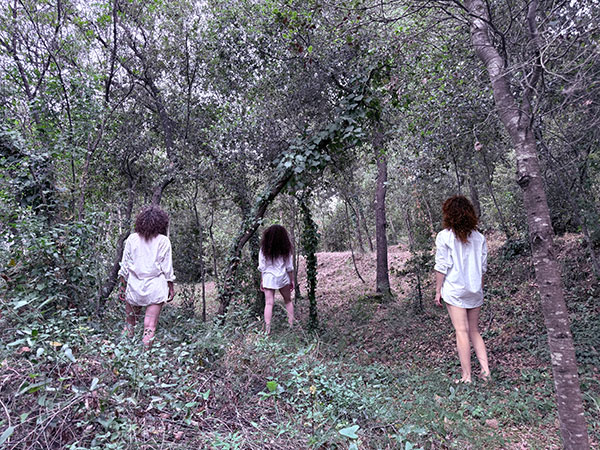

Photograph: Sira Aymerich
Sara Colomino and Alberto Serrano
El Irresistible Peso de lo Irresistible
| Friday 19th | La Bisbal Palace Castle | 18h |
| Saturday 20th | Dryers Sirvent Factory | 19h |
Two bodies embody the internal dialogue we all face: the part that propels and the part that holds back. Suspended between desire and action, trapped in the murky waters of indecision. An emotional landscape where clarity is blurred between the desire to act and the fear of failure.
Sara Colomino
Graduated from Codarts Rotterdam, where she worked with Jiri Kylian, Ohad Naharin and Nacho Duato. Fellow of the Alvin Ailey American Dance Theatre in New York. Her international career spans Europe, Asia, Africa and America. She is part of the Lab 3.14 collective, collaborates with Martz Dance Co, is a guest dancer with La Infinita Compañía in Mexico and a member of the Ehrstrand Dance Collective in Sweden. She has participated in festivals such as Festival Danza Valencia, Mas Danza, Certamen Burgos New York, FIDCDMX in Mexico, among others.
Alberto Serrano
Graduate of the Institute of the Arts Barcelona, participant of the Biennale College Dance 2024 directed by Wayne McGregor. He has worked with companies such as Ballet Contemporani de Catalunya, Company Wayne McGregor, Martz Dance Co, Thomas Noone Dance and Recuerdo Número 7. He collaborates with choreographers such as Cristina Caprioli, Kirill Radev and Rima Pipoyan. In 2024, his duet “Fornow” received the awards for Best Male Performer and Best Indoor Piece at the Certamen Bucles & Carme ‘N’ Dansa in Valencia.
artistic file
| Choreography and performance: Sara Colomino and Alberto Serrano |
| Music: Erik K. Skodvin |
| Editing: Sara Colomino |
| Video: István Lengyel y Christian Ramos |
| Photography: Tania Palomeque Photography |
| Duration: 15 min. |


Photographs: Tania Palomeque Photography
Olga Lladó Valls
Fangar la Memòria
| Saturday 20th | The land room Sirvent Factory | 17:30h |
| Saturday 20th | The land room Sirvent Factory | 18:30h |
“Fangar la memòria” is a contemporary dance proposal that explores clay as a symbolic material linked to origins, femininity, home and intergenerational transmission. The body dances to remember or model, to evoke ancient rituals and inherited gestures that have crossed generations of women artisans and caregivers.
The piece is inspired by the women ceramists of yesterday and today: those who model with their hands, but also with memory and resistance. Clay becomes a metaphor for life that is created, transformed and shared. This solo opens a poetic space between individual gesture and collective projection, connecting the ancestral root with the social and cooperative present of women who create together.
Olga Lladó Valls
Dancer graduated in 2007 from the Institut del Teatre, specializing in contemporary. Since 2009 she has been working professionally as a performer with the Hungarian Theatre Gödöllo Company, by Atilla Egherazi, continuing with the Aracaladanza Company by Enrique Cabrera touring nationally and internationally, Plan B Company by Arantxa Sagardoy, Umma Umma dance by Guido Sarli, Sonia Rodriguez Company, Les Impuxibles Company, Habemus Corpus by Miquel G.Font, and other independent works. Co-founder of the Bool Company with the multidisciplinary shows for all audiences of “AVUA” with the support of Roca Umbert and “SPIRALIS” by the ICEC together with Boris Ribas. As a choreographer she has worked in the shows “MOBILUS” and “KLE” by the Addaura Dansa Company. And as a movement assistant with Les Impuxibles Company in “Suit toc” and “Harakiri”. As a creator and performer in several small-format contemporary dance pieces.
artistic file
| Creation and interpretation: Olga Lladó Valls |
| Externa view: Fàtima Campos Trepat |
| Costume and set design: Olga Lladó Valls |
| Residence support: Espai d’arts escèniques Casal d’Alella |
| Duration: 15 min. |


Photographs: Diego Potes Pacheco
invited artist
Constanza Brnčić
Enlloc
| Saturday 20th | Smoked ceramic room Terracotta Museum | 18h |
| Saturday 20th | Smoked ceramic room Terracotta Museum | 19h |
Fifteen years ago, when I was pregnant and expecting my son Igor, Paula Gertel, a ceramist and great friend of mine, made me the following proposal: “come to the workshop -she said- and we will make your belly with clay!” Since then, that piece -mountain or valley, bowl or hat, tortoise shell or giant oyster- has remained waiting, containing a void and a nowhere that today, on the occasion of the invitation to this festival, I am holding in my hands again and feeling on my thumb. Mud and blood containing time and traces, a memory made of volume and touch that inspires a dance from nowhere.
Constanza Brnčić
Dancer and choreographer. Doctor in philosophy (University of Barcelona). Her artistic and research practice in the field of creation in the performing arts and dance is reflected in numerous artistic, scenic, social, community and educational projects that cross different contexts and areas of knowledge. She is a professor at the Conservatory of Dance of the Institut del Teatre de Barcelona (IT), director of the Postgraduate Course in Performing Arts and Contexts and a professor in the Postgraduate Course in Performing Arts and Social Action of the IT.
artistic file
| Creation and interpretation: Constanza Brnčić |
| External view: Beatriz González Magadán |
| Photography: Gabriela Blanch Brnčić |
| Ceramic piece: Constanza Brnčić and Paula Gertel |
| Acknowledgements: Nuno Rebelo, Igor Brnčić |
| Duration: 20 min. |


Photographs: Gabriela Blanch Brnčić
invited artist
Roberto Olivan
Geometria del desig
| Saturday 20th | Dryers Sirvent Factory | 18:30h |
| Saturday 20th | Dryers Sirvent Factory | 19:30h |
A dialogue between dance and ceramics where the body and clay trace circles that are never exact, but always alive. A poetic exploration of the beauty of imperfection and the search for a harmony that only exists in the constant movement of life.
Roberto Olivan
Roberto Olivan’s international career has been marked by a trajectory that combines risk, poetry and transgression, always seeking new languages of movement. Trained at the Institut del Teatre and P.A.R.T.S. Brussels, he began his career with ROSAS and creators such as Robert Wilson. He is the founder and director of the ROPA company and the Deltebre Dansa international festival, as well as the Obrador Espai de Creació. A versatile creator, he has choreographed for companies, universities and cinema, and has given workshops all over the world. His career, recognised with numerous awards, stands out for his ability to fuse roots and contemporaneity in his own artistic universe.
Marta Torelló
From Barcelona, trained at the Escola Massana and the Escuela de Cerámica de la Bisbal, she is a contemporary ceramist who explores the vessel as a body and metaphor. She works with stoneware and chamotte clays, leaving visible marks and asymmetries as a memory of time and process. Her Imperfect Vessels series celebrates the beauty of fragility and repair. Influenced by wabi-sabi and Mediterranean landscapes, she creates pieces that straddle sculpture and everyday use. Her work speaks of embracing the imperfect, vulnerable and alive.
artistic file
| Performer: Roberto Olivan |
| Ceramist: Marta Torelló |
| Music: Emmanuel Santarromana and Edita Gruberova |
| Duration: 15 min. |


Photographs: Marta Torelló
recognition of awards
With the aim of recognising the work and giving value to the efforts of the creators and the projects presented, the festival will organise an awards ceremony with 4 categories:
– Interpretation Award
With the aim of valuing small-format stage creation as a complete and quality product. The distinctive elements of microdance will be valued (reduced space, brevity and proximity to the audience) and the degree of quality in the interpretation of the proposal as a whole (presence, relationship with the space, between the performers and/or with the scenographic elements, body work, voice, etc.).
– Scenographic Creation Award
With the aim of encouraging the use of scenography or scenographic elements in movement proposals. The degree of singularity and quality of the scenographic elements will be valued, especially those that have been created expressly for the proposal and are inspired by the theme of the festival.
– Arrel i Memòria Award
The aim is to recognise the beauty of the experience, both personal and collective, and in the proposals elaborated with skill. The degree of coherence, robustness and experience of the proposal as a whole (interpretation, scenography, costumes, texts and/or other elements) will be assessed, valuing simplicity and honesty as transversal elements of the proposal and the link with traditional knowledge.
– Public Award
With the aim of seeking the complicity and involvement of the audience, this award aims to offer the possibility of assessing, at the personal discretion of each person, the proposal that has been most liked.
The jury is made up of representatives of the municipality and/or linked to the theme, representatives of the dance sector, and representatives of cultural journalism.
– Xavier Rocas, director of the Terracotta Ceramics Museum in La Bisbal d’Empordà.
– Míriam Seguí, vice-president of the La Bisbal Ceramists’ Association.
– Albert López, artistic programmer for the Street Circus Fair in La Bisbal d’Empordà.
– Jordi Sora, cultural journalist specialising in contemporary dance.
knowledge and territory
Under the name of Knowledge and territory, the actions of community participation and the promotion of new audiences are materialised. These actions are, in turn, an exploration of the subject matter and a desire to contribute depth and richness to the cultural project and stage creation.
It takes the form of a programme of activities complementary to the stage shows, such as: practical workshops, round tables, conferences, various exhibitions, guided tours, plastic installations, community artistic actions, creation laboratories, creation and publication of contents, etc., carried out within the framework of the festival and open to everyone. Different activities in each edition, depending on the characteristics of each locality and the possibilities offered by each theme.
One of the final objectives of the festival will be the construction of literary or visual works based on the thematic axis of reflection, both from an artistic, scientific and documentary point of view. Thus, for example, depending on the areas of knowledge of the theme, a group of experts or a participatory process will produce a final document as a synthesis of the festival.
citizen participation and new publics
social involvement (non-public)
territorial partnerships
commercial fabric and local economy
fields of knowledge
creation of physical, literary or visual works
volunteering 15m2
knowledge and territory
Under the name of Knowledge and territory, the actions of community participation and the promotion of new audiences are materialised. These actions are, in turn, an exploration of the subject matter and a desire to contribute depth and richness to the cultural project and stage creation.
It takes the form of a programme of activities complementary to the stage shows, such as: practical workshops, round tables, conferences, various exhibitions, guided tours, plastic installations, community artistic actions, creation laboratories, creation and publication of contents, etc., carried out within the framework of the festival and open to everyone. Different activities in each edition, depending on the characteristics of each locality and the possibilities offered by each theme.
One of the final objectives of the festival will be the construction of literary or visual works based on the thematic axis of reflection, both from an artistic, scientific and documentary point of view. Thus, for example, depending on the areas of knowledge of the theme, a group of experts or a participatory process will produce a final document as a synthesis of the festival.
citizen participation and new publics
social involvement (non-public)
territorial partnerships
commercial fabric and local economy
fields of knowledge
creation of physical, literary or visual works
volunteering 15m2
knowledge and territory activities 2025
clay animation workshop with archive images by Alice Guy
Engalbar la dansa serpentina (The serpentine dance)
Saturday, 13 September, 10 a.m. to 12:30 p.m.
Led by MARTINA ROGERS.
Terracotta Ceramics Museum (Educational Classroom)
Free activity, registration required. Register at the link (here). For more information, send an email to info@festival15m2.cat.
Limited capacity.
We will cover the paper prints of the film Dansa serpentina by Bob Walter of Alice Guy (1897) with clay to make the clay dance. With the help of engobes and engobe techniques from La Bisbal pottery, we will manipulate and intervene in different images to transform them into a new animated film where we will see the material dance.
Film Dansa serpentina per Bob Walter by Alice Guy, 1897 (lynk)
In collaboration with the Terracotta Ceramics Museum in La Bisbal
Martina Rogers Manzano
Visual artist and cultural mediator. Through play and connection with nature, she invites us to open our perception to capture the invisible. With her hands as her main tool, she fuses various plastic techniques such as drawing, engraving, ceramics and animation.


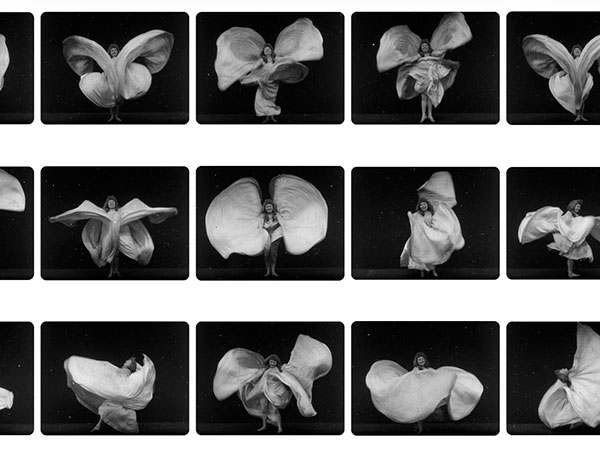
guided tour
Guided tour of the Argiles Bisbal factory
Wednesday, 17 September, 11 a.m. to 12:30 p.m.
Led by QUIM FONT, director of ARGILES BISBAL S.L..
Argiles Bisbal S.L. (Corçà)
Free activity, registration required. Register at the link (here). For more information, send an email to info@festival15m2.cat.
Guided tour of a ceramic product research and development factory to learn about the clay extraction process and the production of different types of clays.
A tasting of cheeses from the Baix Empordà region will be offered at the end.
In collaboration with Argiles Bisbal S.L. and the Terracotta Ceramics Museum in La Bisbal.
Argiles Bisbal S.L.
Argiles Bisbal S.L. is a family business dedicated to the manufacture and distribution of high-quality ceramic pastes, founded in the 1970s by the Font family. Since 2007, it has stood out for its research and development of high-performance ceramic products with a commitment to the environment. The company acquired DAL Bcn in 2015, expanding its offering with high-quality ceramic tools and materials.
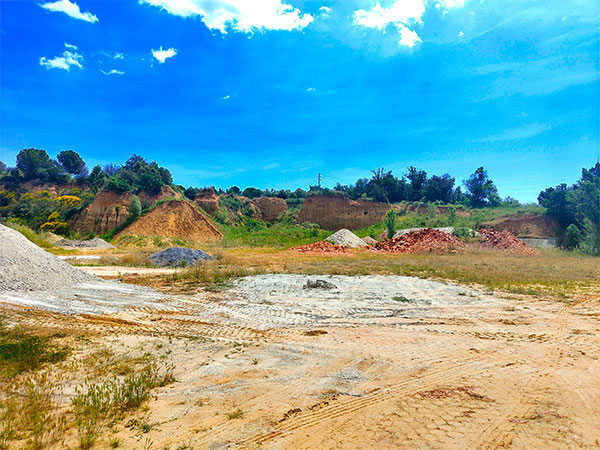


informative workshop
Women in ceramics in La Bisbal: perspectives and challenges
Sunday, 21 September, 6–8.30 p.m.
A day to learn about and reflect on the world of ceramics in La Bisbal d’Empordà, guided by women representing the artistic, artisanal and industrial sectors. A female perspective on the present and the challenges that the future holds.
Terracotta Museum of Ceramics in La Bisbal d’Empordà
Free activity, registration required. Register at the link (here). For more information, send an email to info@festival15m2.cat.
18h Round table led byXÈNIA AGUSTÍ with the participation of DOLORS ROS, ANTÒNIA ROIG, NEUS FERRÉS, ANNA BALLESTÉ and MADOLA.
19:30h Microdance RUGE, of Cecília Colacrai
20h Glass of DO Empordà wine
In collaboration with the La Bisbal Ceramists Association and the Terracotta Ceramics Museum of La Bisbal.
Xènia Agustí i Frigola (la Bisbal d’Empordà, 1995) is the current President of the Association of Ceramists of La Bisbal d’Empordà and the surrounding region. Passionate about customer service, after training in Tourism and Hotel Management and working in other sectors, she has settled down to stay at Ceràmiques Est, the family business since 1962, now part of the fourth generation.
Dolors Ros (Serra de Daró, 1947) is a ceramist and has been the director of the Ceramics School of La Bisbal de Empordà since 1972, an institution that forms part of the rich ceramic heritage of the area. Her career combines a passion for craftsmanship and a vocation for teaching with excellence and commitment. Her work has been key to the conservation and innovation of traditional techniques and also to promoting experimentation and creativity in the world of contemporary ceramics.
Antònia Roig (Arbeca, 1951) is a ceramist from La Bisbal d’Empordà with a consolidated career in the world of ceramics. With the Rogenca brand, she has been selling her pieces in her own shops for 43 years. She is known for creating an alternative approach that follows her own aesthetic in utilitarian objects and combines research into tradition and contemporary research in a balanced way. A master ceramicist recognised by the Generalitat de Catalunya, she has participated in numerous collective and individual exhibitions throughout the country.
Neus Ferrés (la Bisbal d’Empordà, 1968) is the manager of Cerámica Ferrés, a family business founded in 1956 and well known in the ceramics world in La Bisbal d’Empordà. Combining craftsmanship and design with innovation, Ceràmica Ferrés responds to the challenges and demands of architects and designers, adapting to the needs of each project with excellence and quality.
Anna Ballesté (Barcelona, 1982) is a ceramist from Empordà with a well-established artistic career characterised by in-depth technical research into materials, with a special focus on glazes and clays. After studying at the La Bisbal School of Ceramics, the Manises School of Ceramics and a residency in Faenza, in 2011 she set up her workshop in Vulpellac, dedicating herself to the design and artisanal production of exclusive tableware. She has worked as a quality control technician in the ceramics sector and since 2016 has combined teaching with her more personal work in the workshop.
Madola (Barcelona, 1944) is a ceramist and multifaceted artist with an outstanding career in contemporary ceramic art. With a degree in Fine Arts from the University of Barcelona, she has exhibited in numerous museums, galleries and art spaces both nationally and internationally, including the Barcelona Design Museum, the National Ceramics Museum in Valencia, the National Gallery in Dublin and the Nakatomi Museum of Contemporary Art in Japan, among many others. A member of the Royal Academy of Sciences and Arts of Barcelona, she has received numerous awards and distinctions, and her work is recognised for its ability to integrate ceramic art with sculpture and public space.
RUGE
Cecilia Colacrai
The earth and the body rebel and roar. They manifest themselves from the depths. Their rebellion is the same, it is now, it is intuitive and wild, sound and movement.
artístic file
| Creation and performance: Cecilia Colacrai |
| Costumes: Urša Sekirnik |
| Music: diversos artistes |
| Photography: Rodrigo Stocco |
| With the support of: de La Visiva and Festival 15m2 |
| knowledgements: Col·lectiu Big Bouncers, Pablo Colacrai and Ariadna Grau |
| Durada: 20 min. |

15m2 en xarxa
The activity of the 15m2 festival extends beyond the days of the programme in each town where it is held. In this sense, 15m2 en xarxa is born, a space to develop all the actions that give continuity to the main axes of the festival: the scenic creation (microdance) and the activities of Knowledge and territory. Also as a result of the desire to establish synergies with other projects and groups, it represents a constant research in the form of interventions, workshops, talks, exhibitions, cycles, installations, community participation actions, etc., which integrate and nourish the links and the cultural fabric of the whole territory.
Cicles 15m2
Microdance in the municipalities
Última vèrtebra
The Cicles 15m2 are a space to activate the main lines of action of the 15m2 festival beyond the dates of the festival: the scenic creation (microdance), knowledge and territory; developing a work of proximity to the environment, community participation and promotion of new audiences.
A proposal that offers an afternoon of professional microdance (between 2 and 3 short pieces of a maximum of 20 minutes each), plus at least one activity of knowledge linked to the territory. Using unique and unconventional spaces of the municipality, where the public almost shares the space with the performer, and the dimensions and uniqueness of the scenarios build a space of involvement and proximity to the viewer.
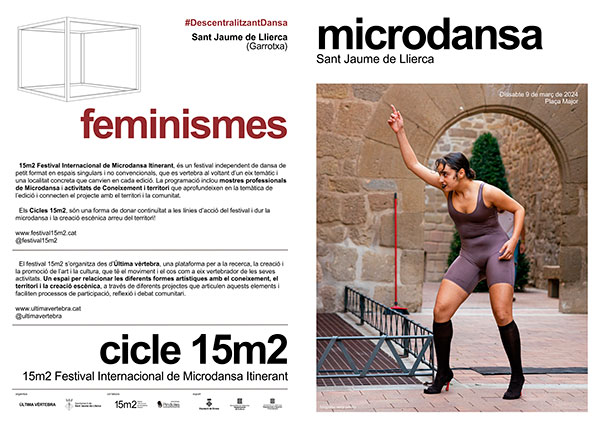
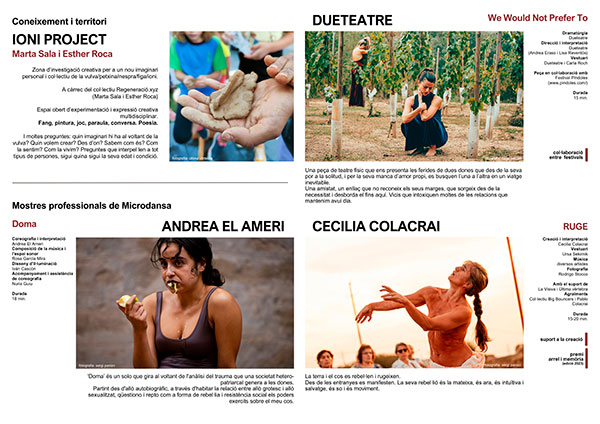
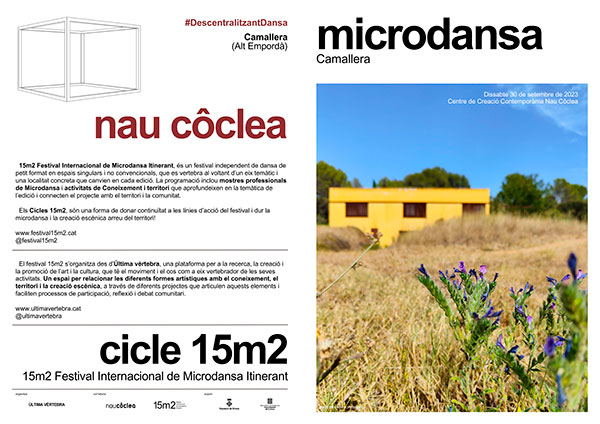
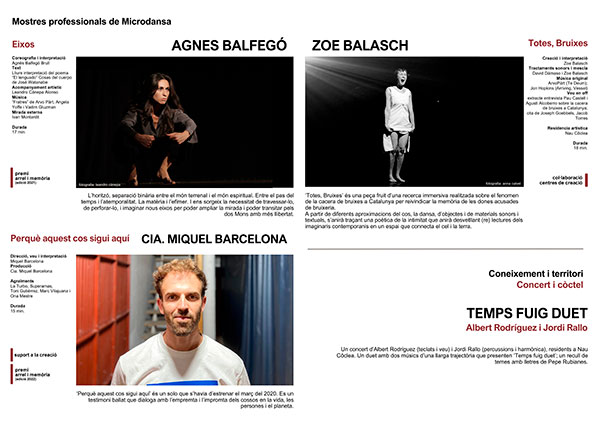
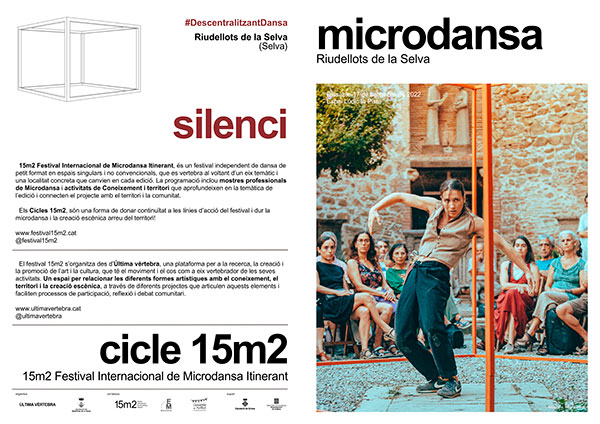
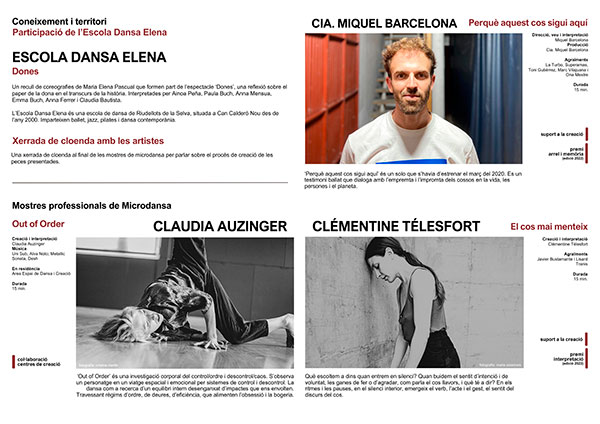
Cove
Dance and handicraft shows
Última vèrtebra
“Cove” is a dance performance about the handmade construction of a traditional Catalan basket. A transgressive and almost exotic action to question the time and rhythm of contemporary society, and a way to claim the use of traditional knowledge for an advanced society, coherent and with greater individual and collective capabilities.
A proposal that integrates movement and craftsmanship, singing, sound art and digital visual art, to enhance the movement of the body and hands of the basket maker and also of the materials and tools he uses. A captivating, risky and transcendent proposal, which proposes a new look at contemporary dance.
“Cove” is born in the context of Arrel i memòria (Last vertebra 2021 – 2024), a project that promotes traditional knowledge through the performing arts and community participation processes, and where the transversal element is the body and movement as a repository and vehicle of knowledge.
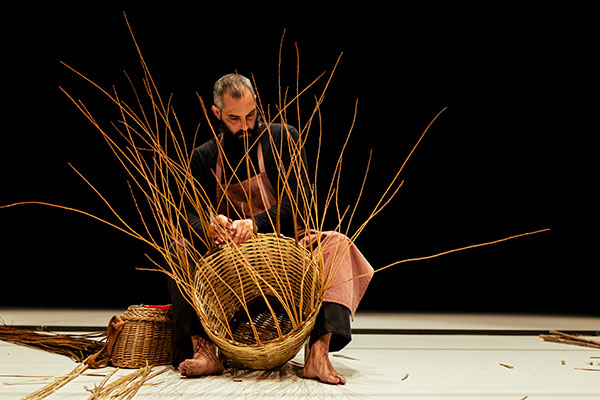
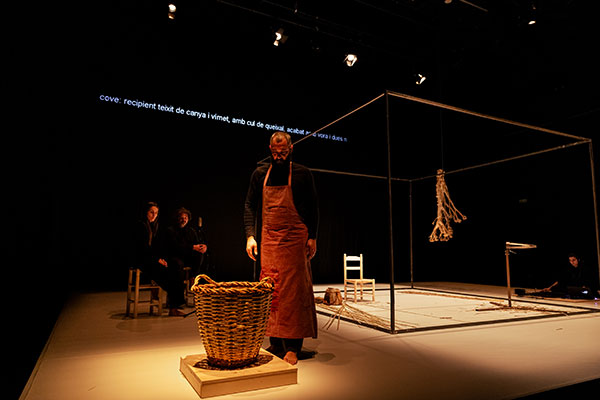
Quan plouen granotes
Art installation and community creation workshop
Última vèrtebra
Public spaces in the city of Barcelona (Barcelona)
“Quan plouen granotes” is an artistic installation with a community creation workshop that is exhibited as a result and continuity of a cultural research project to rethink the time and public spaces of the city of Barcelona in fifteen square meters.
La Rambla, Passeig de Gràcia, Turó del Carmel, Plaça Virrei Amat and Vallvidrera Reservoir have been the setting for this research.
From an empty steel structure and fifteen chairs, Última vértebra has proposed different artistic and community dynamics in different contexts of the city, a process of scenic agitation to reflect on the “stop doing” in public spaces.
The installation is accompanied by a creative workshop to activate the key concepts of the project: the vindication of public space as a place of social expression, the transgressive and symbolic action of ceasing to perform, and its artistic and scenic exploration.
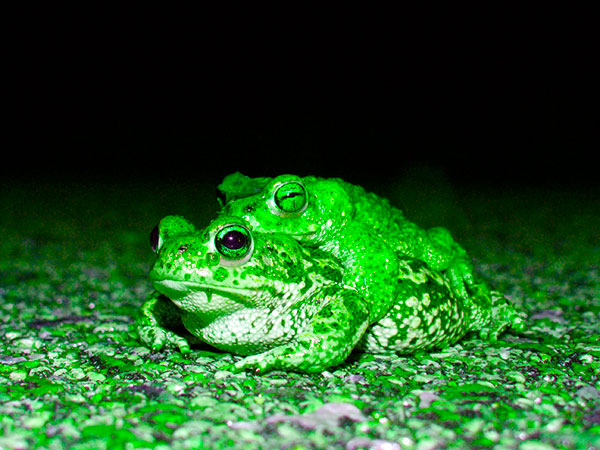
Píndoles - 15m2
Collaboration between festivals

Montjuïc Castle in Barcelona (Barcelona)
Collaboration with the Festival Píndoles – Teatre breu en espais vius in the framework of working with other festivals in the territory of unconventional scenarios to create dialogue and new relationship links. 15m2 collaborates with the selection of dance projects that premiere at the Pindoles Festival and initiates a framework of exchange of artistic proposals between festivals.
2022
“EME – Fugaz de la memoria” by José David Cerda and Julie Tartaglia, from the 2021 15m2 edition, is part of the artistic program of the Festival Píndoles 2022 at the Castell de Montjuïc well space in Barcelona.
2023
“Punteggio per due corpi” by Rober Gómez and Virgínia Gimeno, from the 2022 15m2 edition, is part of the artistic program of the Pindoles 2023 Festival at the former barracks of the Montjuïc Castle in Barcelona.
2024
“Doma” by Andrea El Ameri, from the 2023 15m2 edition, is part of the artistic program of the Pindoles 2023 Festival at the Montjuïc Castle in Barcelona.
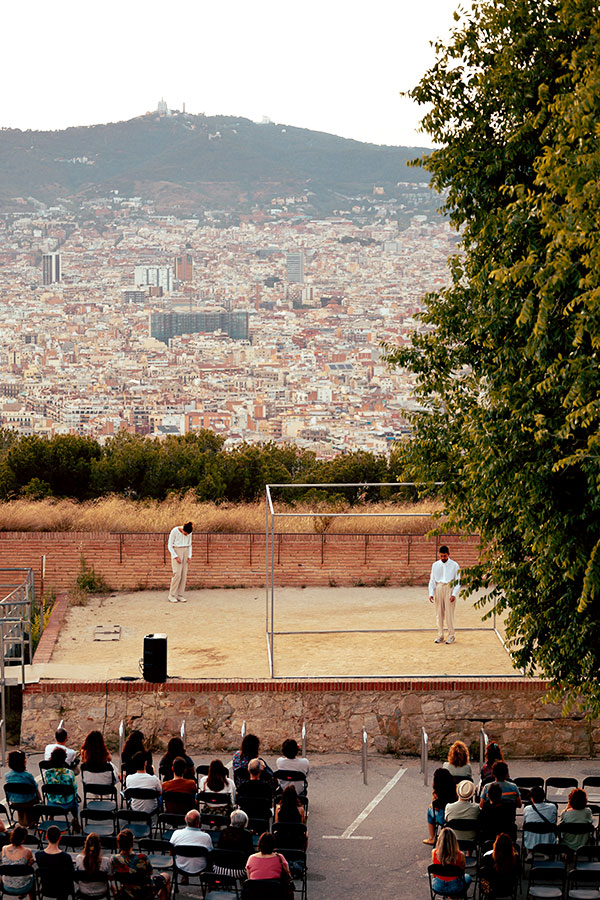
Mentre mengem carquinyolis
Stage installation
15m2 – Última vèrtebra
Espais Vius d’Art, l’Espluga de Francolí (Tarragona)
Two sublime elements, the carquinyoli of l’Espluga de Francolí and you. No more is needed for the dance of proximity. “Mentre mengem carquinyolis” is a device of encounter through a scenic installation based on the carquinyoli, how craftsmanship and dance are related from everyday life. A reflection from the street, in a space of intimacy and comfort. Watch and let yourself be watched while we waltz.
With the participation of Espluga FM Ràdio and Espluga Audiovisual.
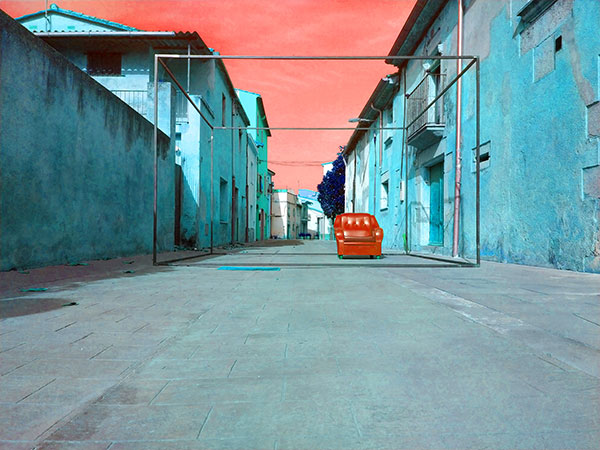
El blat es transforma en farina
Community participation project
15m2 – Última vèrtebra
Santa Coloma de Farners (Girona)
“El blat es transforma en farina” is a community participation project with women recently arrived from the La Selva Adult Education Centre in Santa Coloma de Farners in dialogue with the work of the painter Josep Beulas and Sant Jordi’s Day. This artistic project has been investigated in different stages of work, with painting and writing as the axes of action and transformation. Among them, an installation has been constructed in the form of a mosaic of bookmarks inspired by Beulas’ painting in a delocalised and neuralgic context of the local life of the municipality, such as the Plaça Farners.
With the collaboration of the La Selva Adult Education Centre in Santa Coloma de Farners.
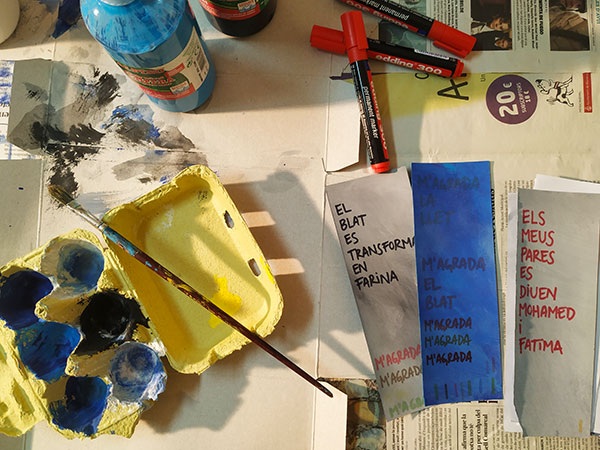
organization
The 15m2 festival is organised by Ùltima vértebra, a platform for research, creation and promotion of art and culture, with movement and the body as the backbone of its activities. It is a space for linking different artistic forms with knowledge, territory and stage creation, through different projects that articulate these elements and facilitate processes of participation, reflection and community debate.
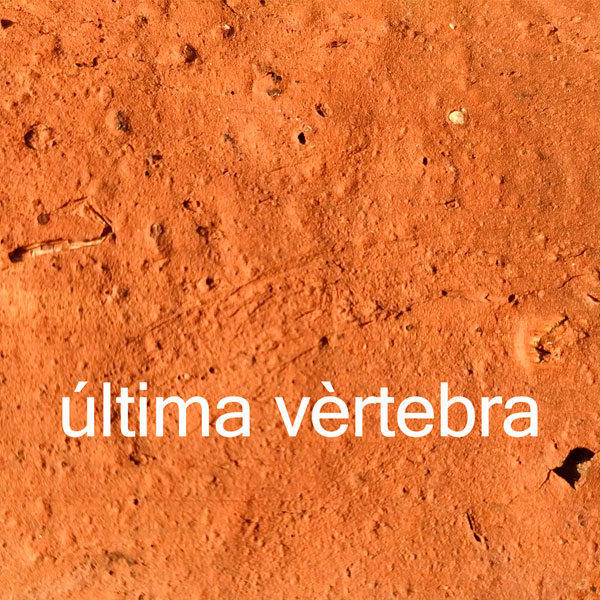
support and collaboration
2025 edition; to muddy (la bisbal d’empordà, girona)
With the support of the Provincial Council of Girona, the Department of Culture and the Department of Equality and Feminism of the Government of Catalonia.
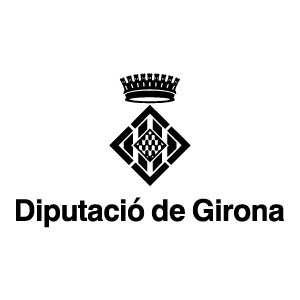

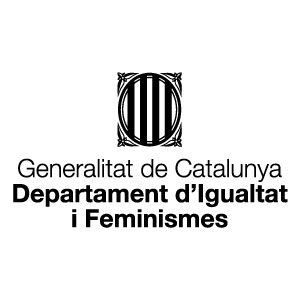
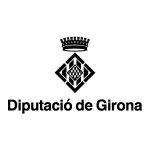
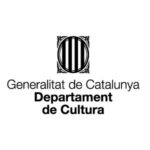
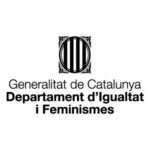
With the collaboration of the Terracotta Ceramics Museum of La Bisbal d’Empordà, La Bisbal d’Empordà Town Council, La Bisbal Ceramists’ Association, Ceràmica Ferrés, Argiles Bisbal S.L., Els Voltors, Terrisseria La Vacamorta, La Bisbal Ceramics School, Surtdecasa and La Bisbal Street Circus Fair.




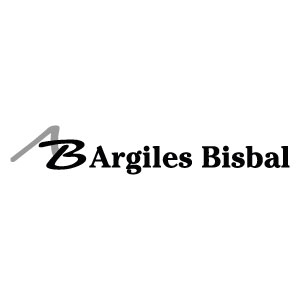









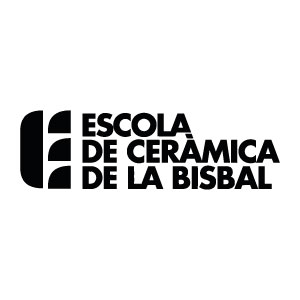
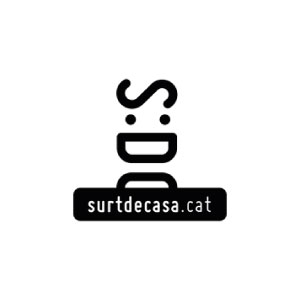
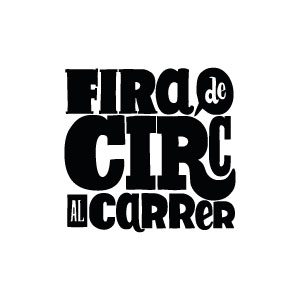



2024 edition; water and textile (puig-reig, barcelona)
With the support of the City Council of Puig-reig, the Department of Culture and the Department of Equality and Feminism of the Generalitat de Catalunya.






With the collaboration of the Museum of the Colonia Vidal, the Associació de Veïns i Amics de Cal Pons, the Associació d’Amics de les Colònies Industrials de L’Alt Llobregat, the Lebanna Project, the Associació de Veïns de Cal Prat, SETEM Catalunya, the Revista l’Erol, the Àmbit de Recerques del Berguedà, the Vidàlia Cooperative, the KINO Project, Espai la Morada, Industrial Puigreig S.A., the Associació de Veïns i Veïnes de l’Ametlla de Merola, the Associació Cultural Esplai, the Celler Vinyas d’Empremta, Blancafort cheeses, La Rocatova i Cal Music, Embotits Caus, Televisió de Puig-Reig and the Consell Comarcal del Berguedà.









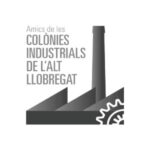








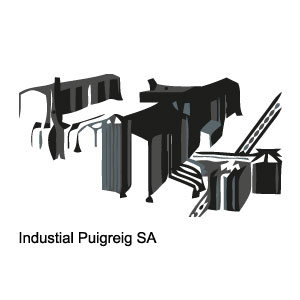





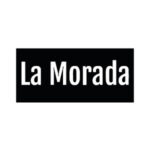




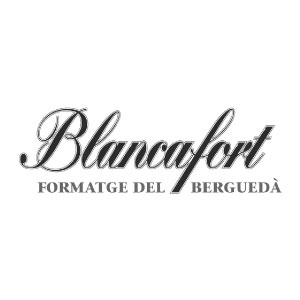


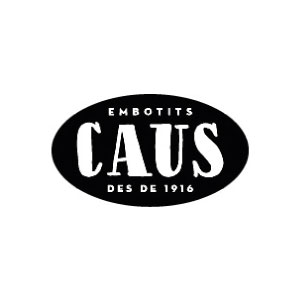

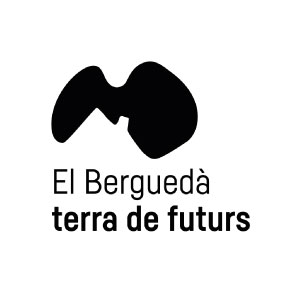




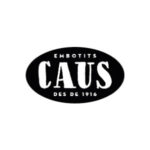


2023 edition; feminisms – rural women (guissona, lleida)
With the support of the City Council of Guissona, the Department of Culture and the Department of Equality and Feminism of the Generalitat de Catalunya.
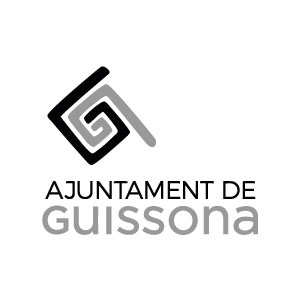


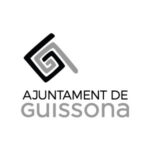


With the collaboration of Nèvia, Associació de Dones de Guissona, the Ateneu de Guissona, the Montse Esteve Dance School, the Museum of Guissona, L’obrador, ceramic workshop, the Library of Guissona, BonArea, Vins Ecològics Comalats, the Diputació de Lleida and the Museu de la Vida Rural.
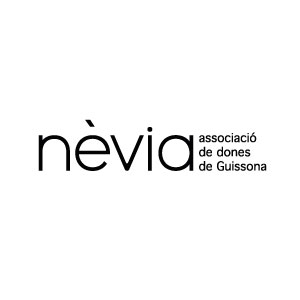
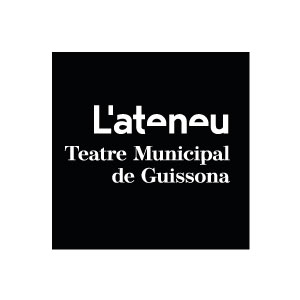
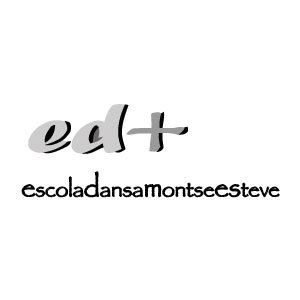
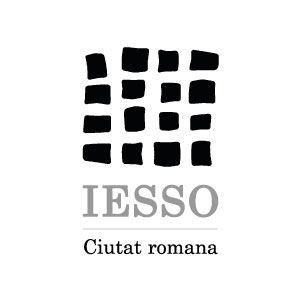
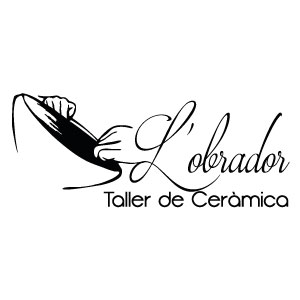
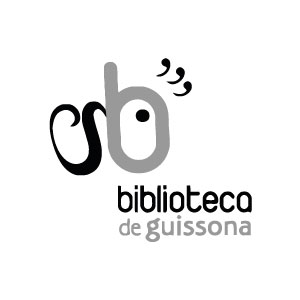
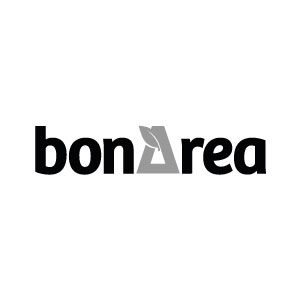
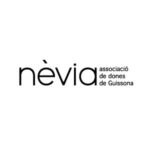
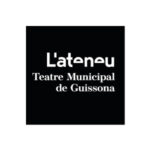
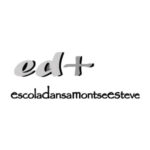
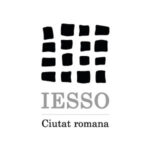
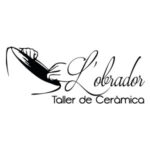
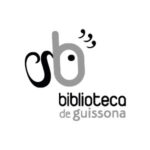

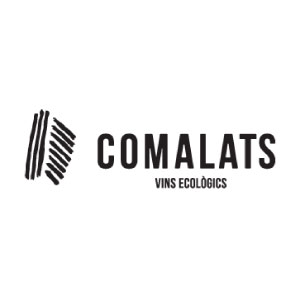
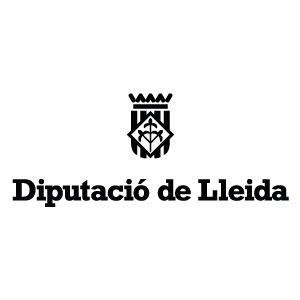
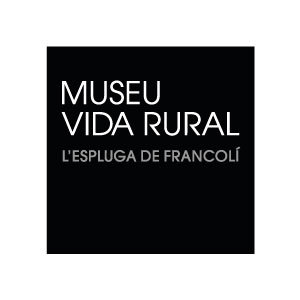
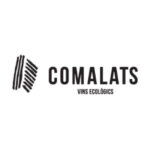
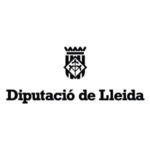
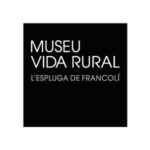
2022 edition; silence – sant jeroni de la murtra (badalona, barcelona)
With the support of the Departament de Cultura de la Generalitat de Catalunya.
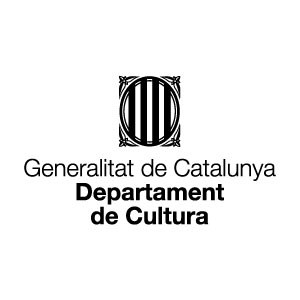
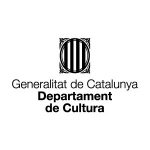
With the collaboration of the monastery of San Jerónim de la Murtra, the Francesca Güell religious and cultural rest area, the Catalonia-America Foundation, Red de Murtras, the organic vegetable garden Conreu Sereny Cooperativa, La Sargantana Cooperativa, the vineyard Vall de Betlem, SapsQue Cultural Agenda of Badalona, Anís del Mono, Area Space for Dance and Creation, Festival Píndoles and the Fundació Catalunya Cultura.
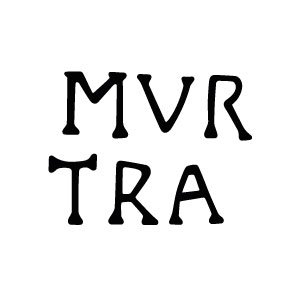
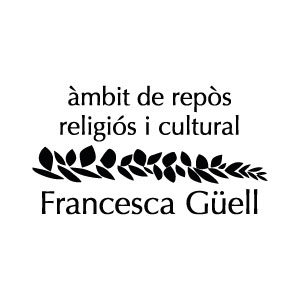
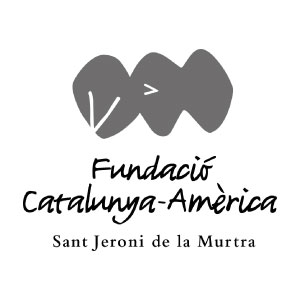
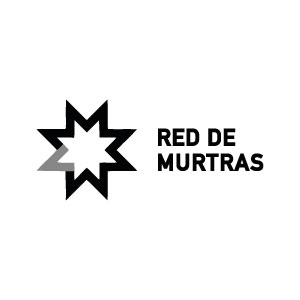
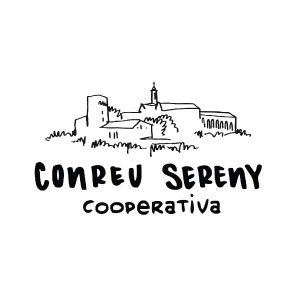
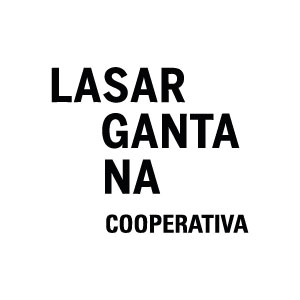
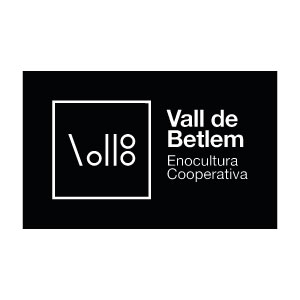
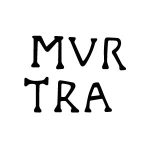
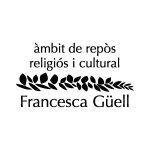
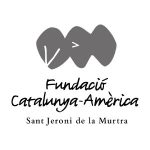
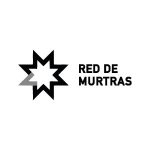
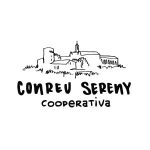
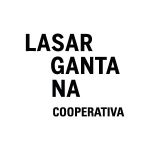
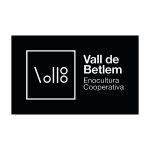
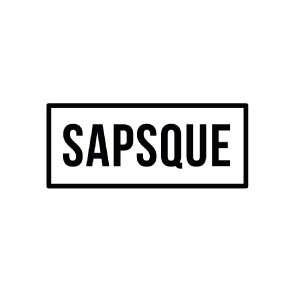
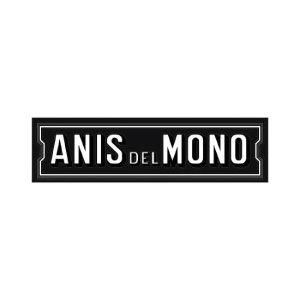
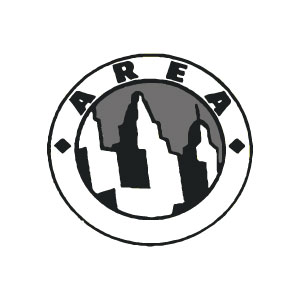
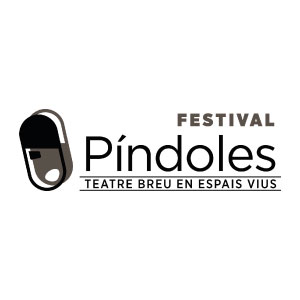
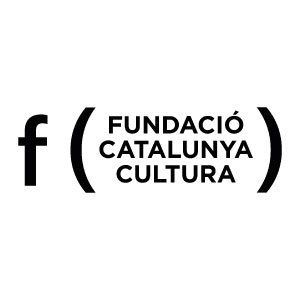
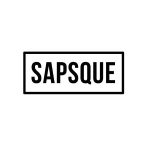
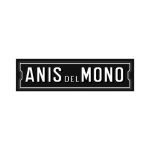
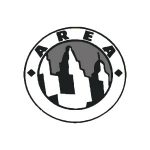
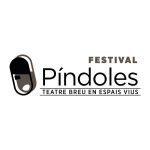
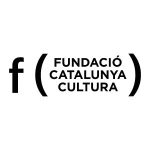
2021 edition; horizon – josep beulas (santa coloma de farners, girona)
With the support of the City Council of Santa Coloma de Farners, the Diputació de Girona, the Associació de Professionals de la Dansa de Catalunya (APdC), selected by the project Carretera i Dansa: Beques de Dansa Aplicada 2021 of the APdC and the productions of Última vértebra of the Horizonte-Beulas project: ENTRE (prep.) and Retorn, from the Department of Culture of the Generalitat de Catalunya.
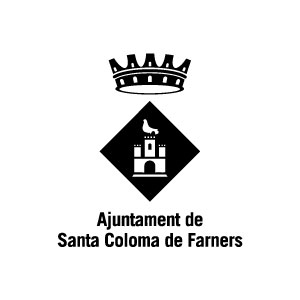

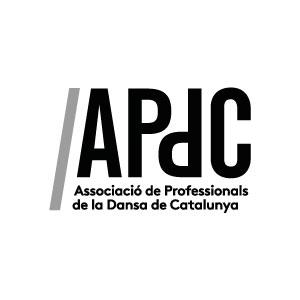

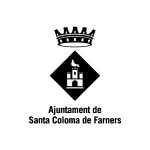

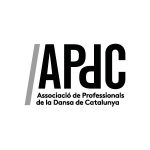

With the collaboration of l’Any Beulas, the Casa de la Paraula, the Joan Vinyoli Library, the CDAN (Art and Nature Centre, Beulas and Huesca Foundation), the University of Barcelona, the Centre de dansa d’Art, nunArt Creacions, the pastisseria Tuyarro, Trias Galetes SA, Font d’Or water and the monastery of Sant Jeroni de la Murtra.
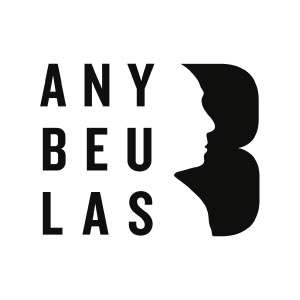
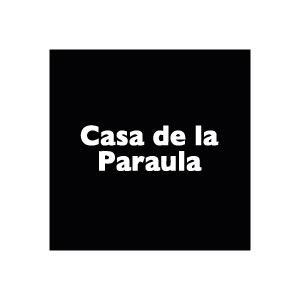
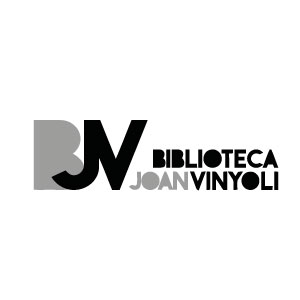
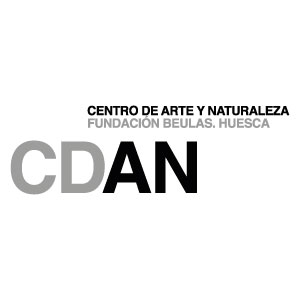
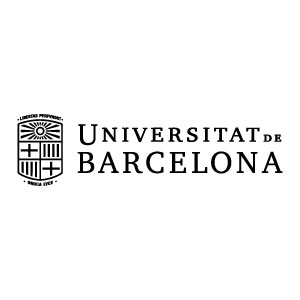
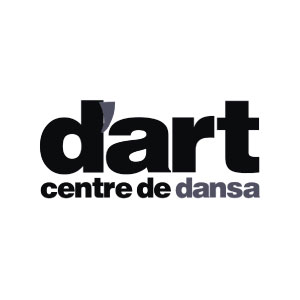
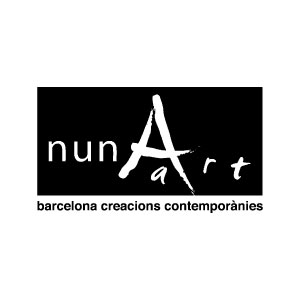
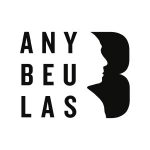
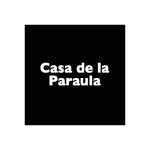
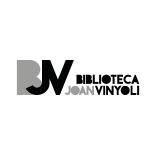
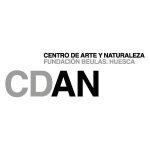
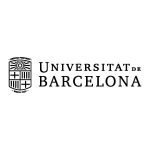
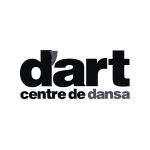
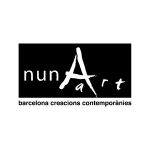
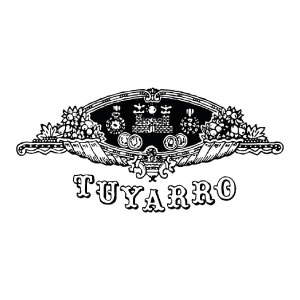
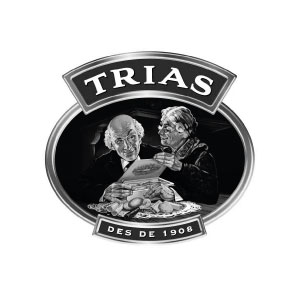


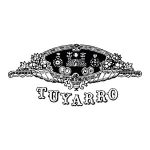
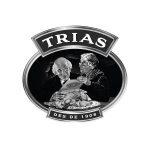
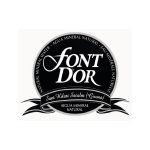

15m2 en xarxa
With the collaboration of the Diputació de Girona, the Centre de Formació d’Adults La Selva, the city council of l’Espluga de Francolí, Espais Vius d’Art, Espluga FM Radio Conca de Barberà, the Festival Píndoles, the Grand Tour, the Centro de Creación Contemporánea Nau Côclea, the Centro de Creación Can Bonamic, the city council of Riudellots de la Selva and the Escuela Dansa Elena, the Institut de Cultura de Barcelona, the city council of Barcelona, the Centre d’Arts Santa Mònica, Area, Espai de Dansa i Creació, the Forn de Pa La Sitja, Supermercado Ecológico Linverd, Escofet, the Mercè Market, the Mercat Cultural de Vallvidrera, the Societat Catalana d’Herpetologia, the Parc de Collserola, the Associació de Cistellaires de Catalunya, El Canal de Salt, the city council of Sant Jaume de Llierca, the Department of Equality and feminism of the Generalitat de Catalunya and the Festival Sismògraf.

